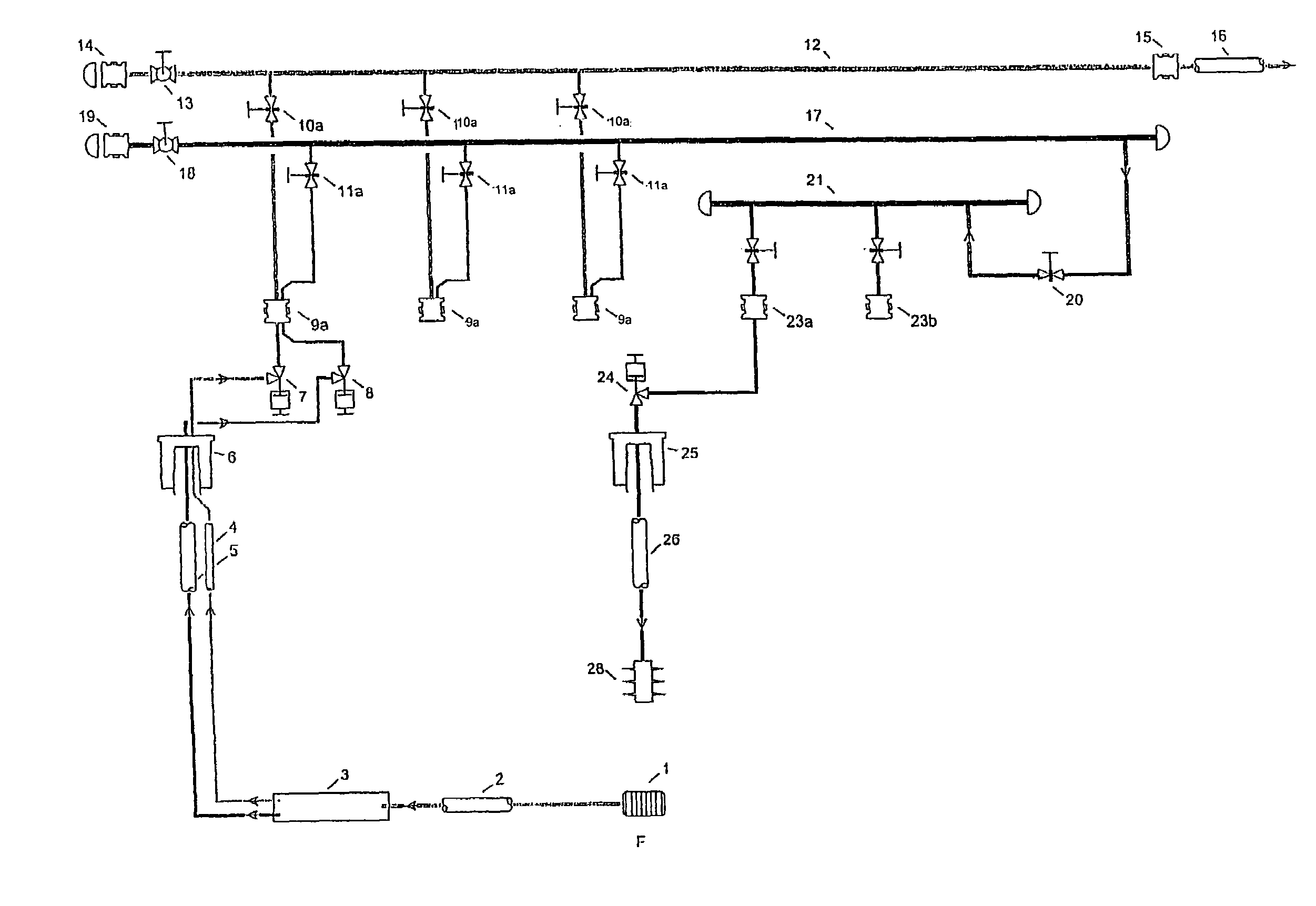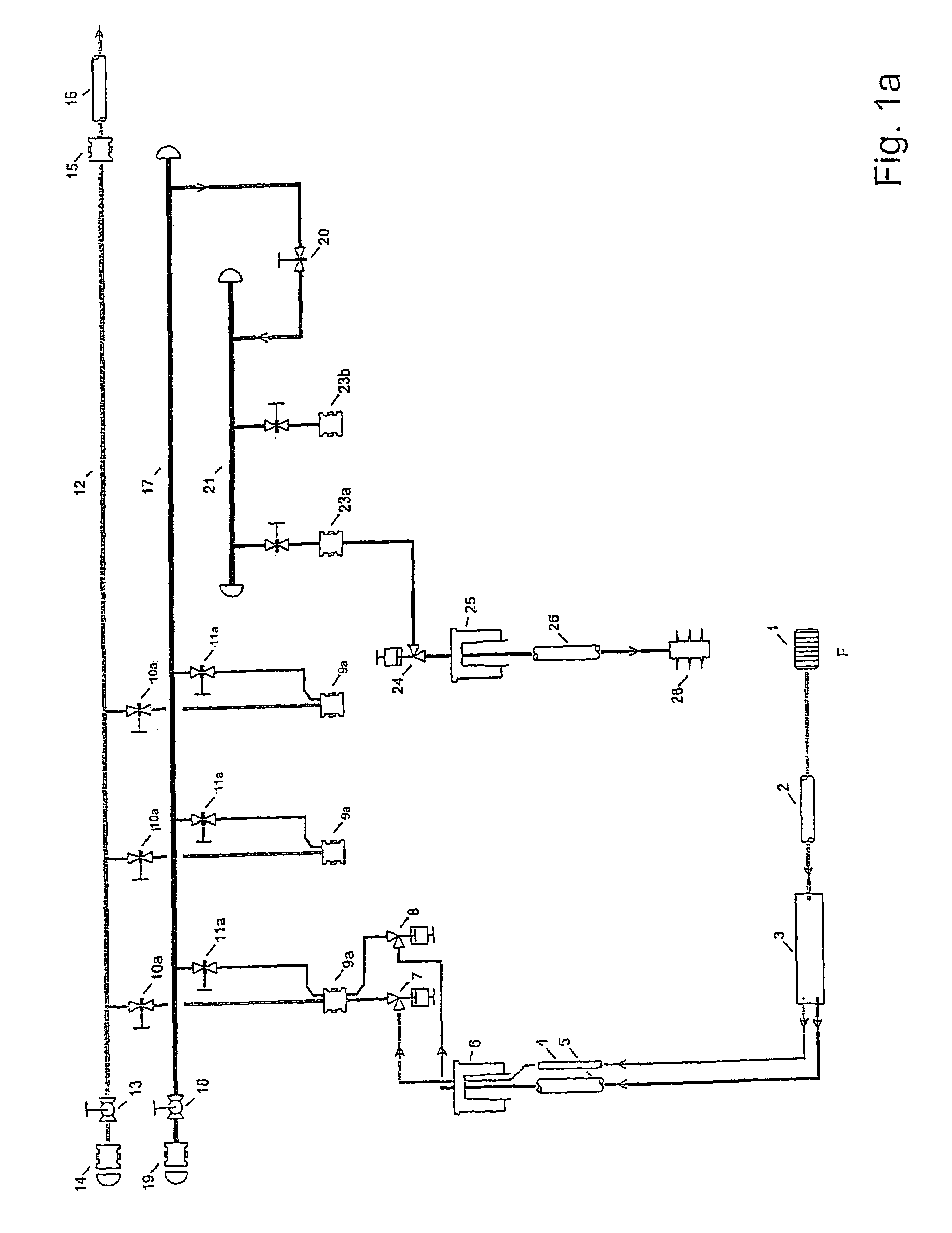Method and arrangement for treatment of fluid
a fluid treatment and fluid technology, applied in the field of downhole, to achieve the effect of reducing pressure loss, increasing pressure drop, and reducing pressure loss
- Summary
- Abstract
- Description
- Claims
- Application Information
AI Technical Summary
Benefits of technology
Problems solved by technology
Method used
Image
Examples
first embodiment
[0039]FIG. 1a illustrates a layout of a production manifold and well according to the present invention. The layout illustrates production of fluid from an underground formation F and transportation of the fluid to the subsea manifold.
[0040]Hydrocarbons (oil and in some cases gas) mixed with water is emanating from the reservoir F flows via sand screens 1 into the well, and is transported in a tubing 2 to a downhole separator 3 where the water phase and hydrocarbon phase are separated. The separator 3 may be of gravity or centrifugal type. The water phase and hydrocarbons phase of the well fluid are transported to the wellhead 6 in separate flow channels 4, 5. Typically the hydrocarbons will be routed to a production tubing 4 whilst the water is routed to the annulus 5 formed between the production casing and the production tubing. Alternatively, in a dual completion system both phases will be brought to the seabed in individual production tubes.
[0041]Using a dual function x-mas tre...
second embodiment
[0050]FIG. 1b illustrates a layout of a production manifold and well according to the present invention. The layout is similar to FIG. 1a, but with a turbine / pump hydraulic converter 31, 32 installed in the manifold. This layout is applicable for a production situation whereby the water phase at the seabed has a higher pressure than that which is required for injection. This available differential pressure may be utilized for pressure boosting the hydrocarbon phase.
[0051]The concept is shown with a turbine 31 installed in second header 17 and mechanically connected to a multiphase pump 32 installed into the first header 12. A by-pass and utility system is not shown, but may be present. The water flowing into the second header 17 is driving the turbine 31 into rotation, the rotation is transmitted via a shaft to the pump 32, which in turn is pressurising the hydrocarbons. This pressurising of the hydrocarbons will provide for a longer transport distance for the hydrocarbons before ad...
third embodiment
[0055]FIG. 1c illustrates a layout of a production manifold and well according to the present invention. The layout is similar to FIG. 1a, but with the implementation of a retrievable speed controlled water injection pump 29 connected to the third header 21 of the subsea manifold by a multibore connector 30. The pump 29 is illustrated without details such as utility systems, recycling arrangement and pressure equalizing valves. The produced water is fed from the second header 17, pressurized in pump 29 and discharged into the header 21 for re-injection. In addition a flowline 34 supplying additional water for re-injection may be present as shown connected to the third header 21 via a connector 33. The isolation valves 20, 35 facilitate retrieval of the injection pump.
[0056]The feasibility of this concept requires that the water phase can be brought from the formation to the suction side of the pump 29 with a net positive suction head in excess of what is required to avoid cavitation...
PUM
 Login to View More
Login to View More Abstract
Description
Claims
Application Information
 Login to View More
Login to View More - R&D
- Intellectual Property
- Life Sciences
- Materials
- Tech Scout
- Unparalleled Data Quality
- Higher Quality Content
- 60% Fewer Hallucinations
Browse by: Latest US Patents, China's latest patents, Technical Efficacy Thesaurus, Application Domain, Technology Topic, Popular Technical Reports.
© 2025 PatSnap. All rights reserved.Legal|Privacy policy|Modern Slavery Act Transparency Statement|Sitemap|About US| Contact US: help@patsnap.com



